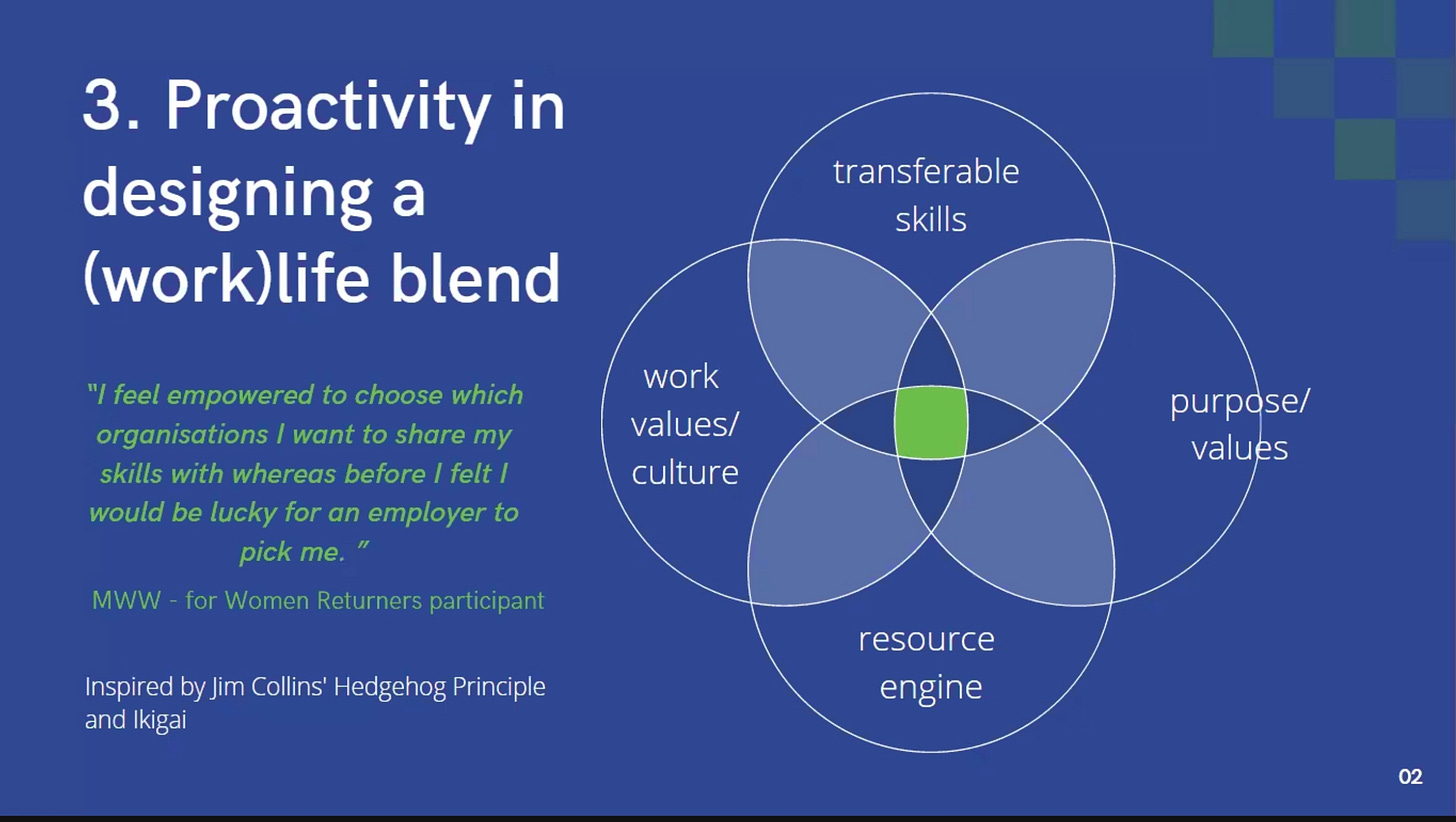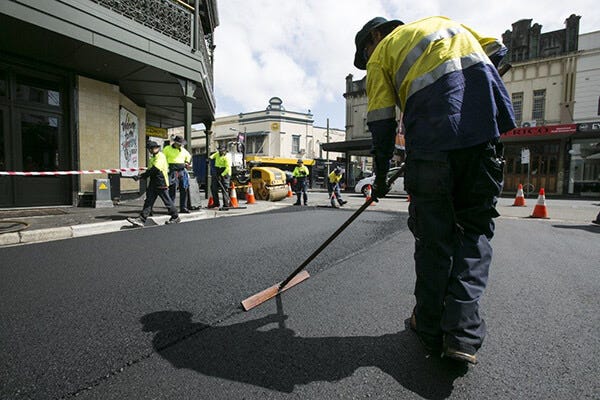Welcome to Just Two Things, which I try to publish daily, five days a week. Some links may also appear on my blog from time to time. Links to the main articles are in cross-heads as well as the story.
#1: The challenges for ‘returners’
I spoke yesterday at an event on the future of skills organised by Not9to5 and RSA Scotland. I shared some notes on my contribution yesterday. Today I’m going to write about my colleague Lynn Houmdi’s project working with women “returners”—coming back into work after a break. (Just for clarity, this was a project through her business The Talent Loom rather than SOIF).
Three quarters of the women were mothers, but not new mothers, and many of them had had a career break for reasons other than looking after children (such as redundancy).
One insight from the project on helping people get back into work is that the first component is self-confidence. There’s no correlation between levels of ability and levels of confidence. But lack of confidence is a gendered effect, and also increases with time out of work, to the point where people stop looking for work to protect their psychological wellbeing.
Lynn’s advice is to do whatever you need to do to rebuild your confidence.
The second is about transferable skills and a commitment to learn. Millennials, apparently, will have 12 jobs in a “squiggly career”. (Although the novelty of this is sometime over-stated—people did a lot more jobs in the past than we sometimes imagine.)
The third is about designing your way back into work, using a helpful diagram that she uses to help people navigate their way into work while also designing their preferred blend of life and work.
(Source: Lynn Houmdi/The Talent Loom)
The left hand side is about the organisation’s values and culture (and what is non-negotiable), the right hand side is about your core values. (I think I have them the right way around). Finally, at the bottom is “your resource engine”—the things that get you out of bed in the morning.
She had two final tips for returners. The first is that however much you hate the word ‘networking’, 75% of jobs are never advertised, so talking to people in work is one of the best ways to get into work. The second is never to skimp on the covering letter because it gives you the chance to make your own narrative about why you have been away from the world of work—and what you learned while there.
#2: Plastic waste in roads
One way to deal with the mountain of plastic waste we are living with might be to use it to repair our roads. This isn’t an optimistic innovation concept; it is already happening.
An article in Yale’s Environment360 recounts the use of plastics in roads in a number of countries across the global South—Ghana, India, South Africa, Vietnam, Mexico, the Philippines—as well as the United States and in Australia. The are some local projects in the UK.
(Source: Close The Loop)
India was a pioneer, two decades ago, and has since built 60,000 miles of plastic roads. But in most other countries it is still at an early stage. Nonetheless, there are benefits beyond just recycling the plastic:
A growing number of studies say that roads containing waste plastic have the potential to perform as well or better than traditional roads. They can last longer, are stronger and more durable in respect to loads and rutting, can tolerate wide temperature swings, and are more resistant to water damage, cracking, and potholes.
And there’s a lot of plastic that could be recycled, since only 9% of the 350 million tonnes humans produce each year is presently recycled.
One of the benefits of using it on roads is that there are a lot of roads. The amount of plastic in road materials is a modest proportion—it typically replaces a proportion of the bitumen that makes up 5-10% of the road’s asphalt. Even this small proportion could consume 40% of our waste plastics if it were used everywhere.
And there are additional applications, such as plastic bike paths in northern Europe, which avoid asphalt altogether by mixing plastic waste with sand.
There’s lots of complications in this story, of course, and they are teased out in some detail in the Environment360 story. We’re still don’t know which technologies work best; standards need to be agreed; there is still much testing to be done to find out what works best, especially for major highways; the process may still create emissions; the roads may (but probably don’t) spin off microplastics.
And all the plastic roads in the world aren’t a better solution than reducing the use of new plastics wherever possible.
j2t#121
If you are enjoying Just Two Things, please do send it on to a friend or colleague.




